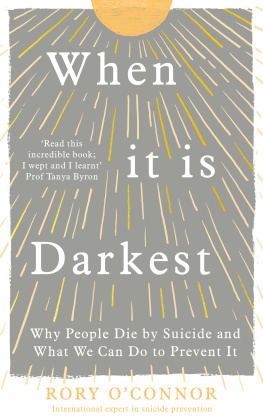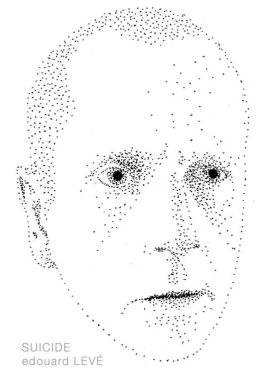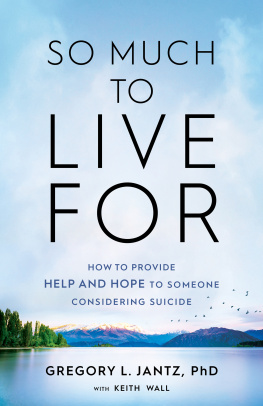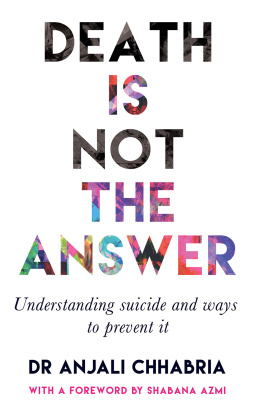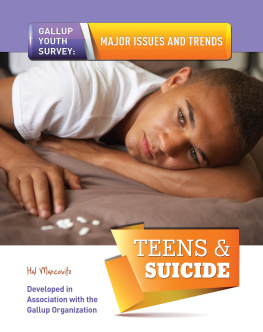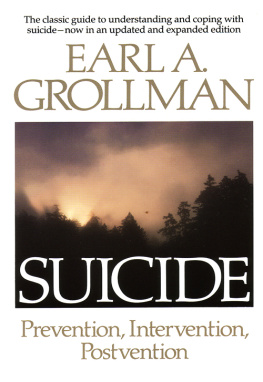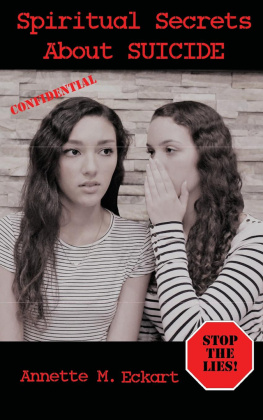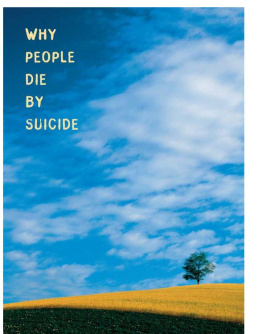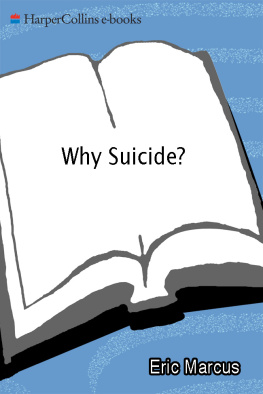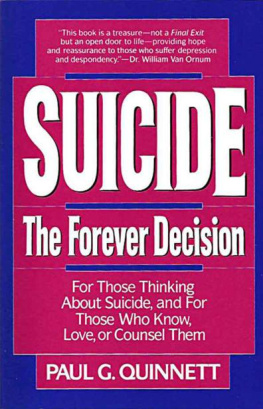About the Author
Rory OConnor is a Professor of Health Psychology at the University of Glasgow where he leads the Suicidal Behaviour Research Laboratory. He is a world leader on suicide research and prevention and has been working in this area for 25 years. In January 2021, Rory became President of the International Association for Suicide Prevention (IASP) and he is also a past President of the International Academy of Suicide Research (IASR). He has published extensively in the field of suicide and self-harm and has contributed to six BBC documentaries on suicide, including Suicide and Me with the rapper Professor Green and Our Silent Emergency with Roman Kemp. You can find him on Twitter: @suicideresearch
To all those who have lost a loved one to suicide and to those who struggle daily to stay alive
Rory Oconnor
WHEN IT IS DARKEST
Why people die by suicide and what we can do to prevent it

EBURY
UK | USA | Canada | Ireland | Australia
New Zealand | India | South Africa
Ebury is part of the Penguin Random House group of companies whose addresses can be found at global.penguinrandomhouse.com.

First published in Great Britain in 2021 by Vermilion
Copyright Rory OConnor 2021
The moral right of the author has been asserted
Cover design by James Jones
ISBN: 978-1-473-58346-7
This ebook is copyright material and must not be copied, reproduced, transferred, distributed, leased, licensed or publicly performed or used in any way except as specifically permitted in writing by the publishers, as allowed under the terms and conditions under which it was purchased or as strictly permitted by applicable copyright law. Any unauthorized distribution or use of this text may be a direct infringement of the authors and publishers rights and those responsible may be liable in law accordingly.
The information in this book has been compiled by way of general guidance in relation to the specific subjects addressed. It is not a substitute and not to be relied on for medical, healthcare, pharmaceutical or other professional advice on specific circumstances and in specific locations. Please consult your GP before changing, stopping or starting any medical treatment. So far as the author is aware the information given is correct and up to date as at December 2020. Practice, laws and regulations all change, and the reader should obtain up to date professional advice on any such issues. All names and identifying characteristics of the individuals mentioned in this book have been changed to protect their privacy. The author and publishers disclaim, as far as the law allows, any liability arising directly or indirectly from the use, or misuse, of the information contained in this book.
Introduction
YOURE NOT GOING to kill yourself, are you?
That was one of the first things that my mother said to me, 25 years ago, when I embarked on a PhD on suicide. She was concerned about the emotional toll that working in the field of suicide research would have on me and would regularly check in to make sure that I was looking after my own mental health.
Of course not, I replied.
Are you sure? she pushed, seeking further confirmation.
To be honest, I didnt know how to answer her question. It wasnt something that I had really thought about. As a 21-year-old, I felt indestructible and had never really invested much time in looking after my own mental health. Also, I had no direct experience of suicide at that stage. I had always been intrigued by mental health, although my decision to study suicide wasnt planned; it was serendipitous. As an undergraduate psychology student at Queens University Belfast, I had been researching depression and I had intended to continue this work into my PhD.
However, in the summer of 1994, just after my graduation, out of the blue, one of my professors, Noel, telephoned me, asking whether Id be interested in doing a PhD on suicide. I jumped at the chance. When I thought about it, it was the obvious next step for me. Suicide is the most shocking outcome from depression and, although the suicide rates among young men across the UK in the early nineties were on the increase, there had been little relevant research in Northern Ireland. That day, when I agreed, I couldnt quite envisage what a PhD on suicide would look like, but I grabbed the opportunity with both hands and just ran with it. And there it began suicide research was to become my lifes passion. Little did I know, though, that many years later Noel would lose his own mental health fight by his own hand. I often think about him reaching out to me, it was like my Sliding Doors moment; although Ill never know for certain, I doubt I would have become a suicide researcher without him, I think my life would have taken a very different path. For this I am eternally grateful. To this day I wake up every morning with as much drive and enthusiasm (if not more) to make a difference as I did in my twenties. Perhaps I should have reached out to Noel in his hour of need. I really wish I had. Ill always regret that I didnt do more for him. Guilt and regret are such commons emotions after a suicide.
Returning to my mothers question, I hadnt anticipated the emotional toll of doing a PhD that involved interviewing people who had attempted suicide and learning, at first hand, the intimate details of those who had died by suicide. I dont know why, it was obvious. Of course it would be draining. To this day, I vividly remember the first person I interviewed as part of my PhD: Greg, a man in his forties who had been admitted to hospital after a suicide attempt. He had taken a massive overdose hours before. He was lucky to be alive, but he seemed so angry when I clapped eyes on him from across the ward. Although I had role-played in advance what I might say, I was still petrified as I approached his hospital bed. I was starting to sweat, hoping I wouldnt say the wrong thing.
Hello, I am a psychologist who is carrying out research and Id like to ask you some questions about what happened last night. Is that okay? I enquired. I expected him to say no, but to my surprise, and as I would learn, like most patients who I approached following a suicide attempt, he agreed.
We talked about his life, his mental health, his recent long-term relationship breakdown, his distant past and how he came to attempt suicide the night before. He wanted to be heard. Although he was older than me, he was no different from me no different from any one of us; he was someone going through a bad patch, struggling to get through each day. Also, I had misjudged him; he wasnt angry, but despondent he was stuck, trapped, feeling a burden to loved ones. When I asked how he felt now, after his suicide attempt, and whether anything had changed for him, he told me, tearfully: No, nothing has changed. I dont care. I feel the same way as I did last night. I feel as depressed and as useless as I did yesterday. And he was right, nothing had changed his relationship was still broken and he was no closer to getting the support for the trauma he had experienced as a child. He had been diagnosed with an adjustment disorder and would soon be discharged, receiving no more support beyond a letter sent to his GP. I felt so helpless; it was my first experience of the emotional impact of seeing someone in such acute distress but not being able to help. He was leaving hospital with more problems than when he had arrived barely conscious in an ambulance hours earlier. Now he had to face his family.

